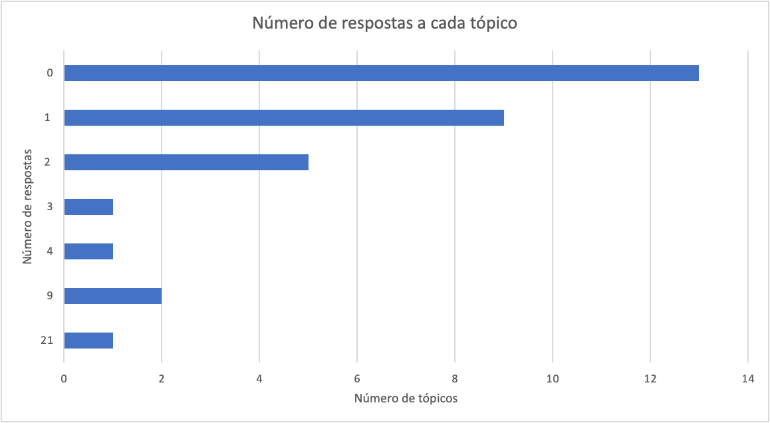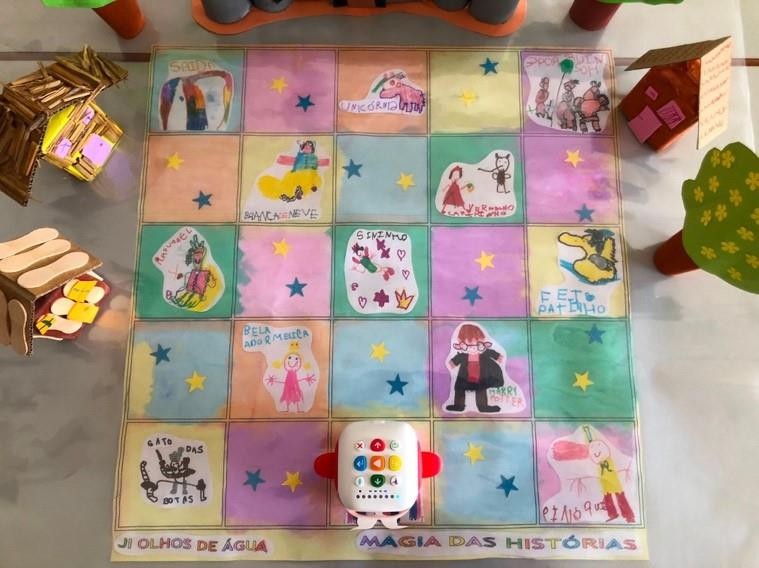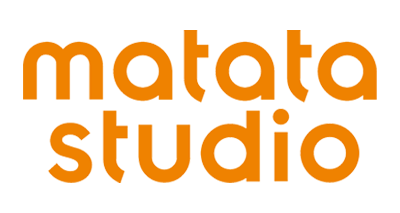
2024-03-06
João Carlos Grácio, Ana Chambel, João Torres, Miguel Figueiredo
Escola Superior de Educação, Instituto Politécnico de Setúbal
Setúbal, Portugal
https://ieeexplore.ieee.org/document/10423703
Abstract— This paper aims to reflect on the development of a project for the educational use of robotics in the early years, that culminated in the challenge of participating in an international competition, the MatataWorld Robotics Competition (MWRC). A case study methodology was used, resorting to the teachers' evaluations and reflections and the material submitted to the competition. Kindergarten and primary classes took part in the project, which was supported by MatataStudio, an educational technology company, that is also the organiser of the MWRC competition. Data analysis shows that the participation of schools in this project was very positive and that the participation of teachers and educators in the international competition promoted the educational use of robotics and provided an opportunity to create an online community.
Keywords— Educational robotics, teacher training, communities of practice.
1. INTRODUCTION
The MatataStudio Project started during the schoolyear 2021/2022 and emerged from a partnership between the Directorate-General for Education (DGE), European Schoolnet (EUN) and MatataStudio. Six European Union countries actively collaborated in this project: Portugal, France, Denmark, Norway, Czech Republic and Slovakia.
The ICT Competence Centre of the School of Education at Setúbal Polytechnic Institute, in Portugal (CCTIC-ESE/IPS), was responsible for the project implementation and invited the Luísa Todi School Cluster, in Setúbal, to participate. As a result, six kindergarten and primary school classes, from two schools, were included in the project.
The project's goals, in that year, were:
- To get students to explore the MatataStudio robotics kits: Tale-Bot and Coding Set;
- To build lesson plans, using robots for learning;
- To test these lesson plans with the students;
- To promote the pedagogical use of these programming learning tools;
- To share lesson plans between the different countries involved in the project.
As a conclusion of the project, in May 2022, the Directorate- General for Education (DGE) held a webinar to present the project and the activities developed within it, with a presentation of the lesson plans that had been designed and the experiences of implementing them in the classroom.
After the work carried out during the 2021/22 school year, at the beginning of the scoolyear 2022/2023 the team of the ICT… considered it would be relevant to develop similar activitiesin more schools in our area of influence.
Thus, the company MatataStudio was approached to ascertain their interest and availability and, after an initial meeting, a protocol was signed so that the project could be implemented. In addition to developing activities with the teachers, it was also agreed that a competition would be held in Portugal with all the classes involved in the project, similarly to other competitions that the company had organised in other countries.
After this first phase, eleven public school clusters and one private school were contacted. Ten of the eleven public school clusters showed interest in taking part in the project, as did the private school. Our aim was to have a minimum of 20 teachers in the competition, which was equivalent to an average of two classes per school cluster. If we achieved this goal, we would also be able to implement practices for the use of educational robotics both in the pre-school and primary schools of the different schools involved.
We therefore established a memorandum between the Polytechnic Institute of Setúbal and the school clusters involved, defining what both parties were committed to doing, with the Polytechnic Institute of Setúbal being responsible for the teacher training , the loan of two robots per group for the development of the activities, and for accompanying the teachers in their participation in the International Robotics Competition (MWRC Portugal). The school clusters were responsible for determining a group of teachers (minimum of 3 and maximum of 10) who would take part in the teacher training and in the International Robotics Competition (MWRC Portugal), with a minimum of two classes (1 kindergarten class and 1 primary school class) taking part in the competition.
This partnership was established for one year, ending in December 2023.
This text is an opportunity to understand the success of the initiative, not only by analysing and reflecting on the teachers' paths, but also by interpreting their commitment with the competition. To do this, we will present the activities carried out during the project implementation and reflect on the participants' feedback on the training given and the interactions established between the participants via Moodle platform, in a course created to monitor the project.
Our paper begins with an introduction, followed by a theoretical framework, a description of the methodology adopted for the research, as well as the analysis carried out, based on the data obtained and the presentation of the results. Finally, we will present some conclusions that will be useful to adapt methodologies and procedures in future projects.
2. THEORETICAL FRAMEWORK
In recent years, one of the training areas in which there has been a growing interest among teachers is educational robotics. According to the requests that we receive, this is related to the need to address essential learning in different subjects in a more playful and motivating way.
This idea of motivation for learning is advocated by Rodrigues & Felício [1] when they state that working with robots is very motivating for children, as they happily get involved in the activities and try to solve the challenges successfully. According to the same authors, "Even among usually more difficult children who place little value on school and work of the teacher, who often have very little interest in the lessons and activities developed, the motivation, interest and commitment were visible." (p. 110).
In addition to this issue of students’ motivation to learn, several authors have emphasised the role that educational robotics can play in developing the students' skills.
While educational robotics initially emerged to be closely linked to more technical subjects, from the perspective of a technological discipline, that deserves its own independent approach, in recent times it has come to be used "in school contexts, since kindergarten, with the conceptualisation and construction of robotic theatres and dances, to use in contexts for learning mathematics, physics or concepts linked to programming, automation and home automation." [2].
In fact, these projects, which are being carried out, do not have the sole aim of mastering programming and robotics from a more technical perspective, but rather to use it to enhance better learning on the part of the students [2].
For Pedro, Matos, Piedade & Dorotea [3], educational robotics "makes it possible to make the concepts linked to programming and computational thinking tangible" (p. 16).
According to Pereira Matos & Ramos [4], educational robotics can lead students to "learn to create, learn to plan, learn to solve problems, learn to programme by linking tangible artefacts, building something with a purpose, and also providing connections with content from different areas of knowledge (...)" (p. 3)..
According to Ramos [5], "One of the strengths of using robotics is to encourage students to work in groups, stimulating communication, critical thinking, problem-solving, among other skills provided for in the Students' Profile at the end of compulsory schooling" (p. 36), preparing them for their professional future.
For Tadeu, Brigas, Pereira & Arziev [6], robotics activities "tend to allow children to discover answers for themselves rather than just receiving solutions or algorithms to follow; that is, a constructivist approach is encouraged; promote students to realise that they are able to find solutions to problems on their own rather than receiving a solution to apply to the problem." (p. 117).
Thus, the use of educational robotics in the classroom can make the educational process more dynamic, consistent, interactive and engaging, enabling students to use new tools that mobilise several knowing, doing and being dimensions, by creating active and interdisciplinary learning situations.
In addition to these issues, there is another one that is extremely important and which relates to the role of error. Debugging, which is related to problem solving, involves exploration, observation, communication and reflection and it can be done in a playful way by getting students to imagine while they work on solving problems [7].
So, working with robotics can enable students to: i) get to know a problem, search and select prior knowledge in order to make a decision; ii) establish relationships, rather than analysing some content in isolation; iii) work collectively to reach a solution to the proposed problem; iv) co-operate, in order to reach a consensus; v) explain their own thinking and try to understand other person's ideas; vi) discuss doubts and ideas; vii) incorporate alternative solutions, structuring and broadening their understanding of the concepts involved in the situations and viii) create situations in which they need to develop some kind of strategy to solve them [8].
However, this kind of work will only make sense if the teacher adopts "methodologies and work strategies that provide
students the opportunity to analyse, investigate, experiment and propose solutions to concrete problems" [3, p. 23]. The same authors suggest adopting "active and collaborative learning methodologies that favour student participation, knowledge articulation, collaboration, critical thinking, problem-solving, logical reasoning, sharing and communication". (p. 23).
To summarise, robotics brings many advantages to the teaching and learning process. However, everything will depend on the educational environment used by the teacher, the pedagogical intent of the activities and the learning scenarios that will be developed with the students.
In addition to the aspects of educational robotics for the development of the project, the participation of the teachers in a community of practice supported by the Moodle platform was also relevant. In fact, communities of practice (CoP) are made of people who share the same interest or passion and who, on a voluntary basis, interact regularly, exchange information and knowledge and share learning [9].
3. METHODOLOGY
In this section, we describe the methodology adopted, which includes the research design, data collection procedures data and the data analysis strategy used.
This study does not aim to generalise the results obtained, but seeks to investigate facts, ideas and discover meanings in individual actions and social interactions, from the perspective of the actors involved in the process [10], which is why we consider it to be eminently qualitative [11].
We are looking for a detailed description and analysis of a system limited to the MatataStudio initiative [12], which is understood to be a singular situation with well-defined characteristics [13]. The case study is a research method widely used in the social sciences when looking for the "how?" and the "why?" [13], when studying real events and when the research field is centred on a natural phenomenon within a real-life context. Unlike experimental studies, in which factors can be modified to see what effects they produce in case studies the descriptive and interpretative elements are more important than cause-effect relationships. The main aim of using a case study method is to understand an observed phenomenon with well- defined characteristics, referred to as a case, and does not require the intention of generalising the results obtained [10].
We assume that case study has an eminently qualitative mark, but we don't exclude the possibility of including quantitative data [14].
In this case, the data being analysed was collected through the questionnaire used to evaluate the Short-Term Training (STT), by collecting the contributions made by the teachers according to the experiments they carried out in the classroom and, finally, by the classes that submitted their work to the competition.
Therefore, we are dealing with a case study that includes qualitative data, but also quantitative data [15]. The qualitative data comes from the interaction in the forum and the quantitative data was collected through a questionnaire used to evaluate the STT.
The schools invited to take part in the project were chosen based on their involvement in the Digital Textbooks Pilot Project, in close articulation with CCTIC-ESE/IPS.
Data was collected throughout the three phases of the project's development: evaluation of the Shot-Term Training by the participants, participation in Moodle and submission of projects to the competition. At the stage when this analysis was carried out, there was still no information about the ranking of the projects.
We have kept the anonymity of the teachers involved in the project and, when referring to their participation in the forum, we have used a code that corresponds to the one automatically assigned by Moodle.
4. DATA ANALYSIS
a. Teacher Training
Three training sessions were held during the month of January 2023, distributed geographically across the district of Setúbal, to minimise travel for the teachers attending the training (see Table 1). A total of 81 teachers took part in these sessions and their aim was to introduce the project, provide an initial introduction to educational robotics and, in particular, the robots that would be used in the project.
Table 1 - Location of training sessions and number of teachers involved
|
Location |
Date |
Number of teachers |
|
Session 1 - Quinta do Conde |
18/01/23 |
29 |
|
Session 2 - Pinhal de Frades |
25/01/23 |
21 |
|
Session 3 - Setúbal |
26/01/23 |
31 |
|
Total |
81 |
The sessions were led by a team of six teachers, and in each session, there were always three trainers. The first part of the sessions consisted of a presentation by the trainers on the potential of educational robotics. Secondly, in groups, the trainees explored the robots with the help of the trainers and, thirdly, the discoveries made were shared in a large group and any doubts raised were discussed.
At the end of the session, participants were asked to evaluate the sessions quantitatively in relation to six parameters (i) Achievement of goals, (ii) Meeting expectations, (iii) Interaction with the trainer, (iv) Clearness of the presentations, (v) Logistical support and (vi) Overall satisfaction. Each of these parameters was evaluated on a scale of 1 to 5, where 1 was considered very negative and 5 very positive. Sixty teachers evaluated the training, 74 per cent of those who had attended it. Table 2 shows the quantitative results of this evaluation.
Table 2 - Results of the training evaluation
|
Session A |
Session B |
Session C |
Average |
|
|
Goal achievement |
4,79 |
4,86 |
4,82 |
4,82 |
|
Expectations fulfilment |
4,67 |
4,71 |
4,67 |
4,68 |
|
Interaction with the trainer |
5,00 |
4,93 |
4,86 |
4,93 |
|
Clarity of the presentation |
4,91 |
5,00 |
4,95 |
4,95 |
|
Logistics support |
4,58 |
4,77 |
4,57 |
4,64 |
|
Global satisfaction |
4,87 |
4,71 |
4,68 |
4,75 |
|
Average |
4,80 |
4,83 |
4,76 |
4,80 |
All of the evaluated parameters were frankly positive, with the highest values relating to the clearness of the presentations and interaction with the trainers.
In the same questionnaire there were also two open questions where the trainees could highlight the most positive aspects and the least successful.
In the open questions, the teachers mainly emphasised the opportunity to have contact with the robots they were going to use. As a less positive point, some teachers emphasised the short time available, saying that they would have liked more training time to allow them to explore the robots more deeply. In two of the sessions, where there were more trainees, some also pointed out that there were few robots to explore.
b. Moodle Participation
Fifty-five participants were enrolled in the Moodle course to support the project. Of these, six were part of the team promoting the project and the rest were teachers who had implemented the project in their schools. We can see from the messages submitted that some of these registered teachers were not participating individually, but representing a group or a school, for example.
c. Message analysis (Questioning and Sharing Forum)
Twenty-nine teachers were involved in the forum. The two most active participants, who posted 21 and 10 messages respectively, were the trainers who monitored the group. To encourage the sharing of experiences and clearing doubts, these two participants replied to many of the messages posted by the other members [9].
A total of thirty-two topics were opened on the forum and ninety-seven messages were registered. As the name of the forum suggests, most of the topics consisted of sharing experiences and asking for clarification of doubts. The topic with the most replies had 21, and was a question posed by the trainers to collect the participants for the competition. This was followed by two topics with 9 replies each, one referring to doubts about sending the work and the other was a challenge to share the activities being carried out (see Fig.1).
Fig.1 – Messages posted on the forum

This sharing of experiences, such as the one below, describes the context in which it was carried out and the materials used:
On the subject of Financial Education a mat and its questions were designed, with the answers corresponding to the images on the mat. The mat was explored by 2nd, 3rd and 4th year students. When constructing the itineraries, angles, some musical notes and their respective length were covered, among other contents (Prof. 1572).
These reports were almost always backed up with photos and videos showing the activities carried out, where it was possible to see the richness of the materials made, such as specific mats, for example (see Fig.2), and the involvement of the students in group work [2][4][5][8].
Fig.2 - Photo published by teacher 1222

We think that many colleagues were inspired by the sharing, although there is no evidence on the forum to prove this. However, since the video format was the one in which the competition entries would be made, this sharing of experiences was certainly a motivating factor for other teams to take part in the competition.
There is even a message suggesting the construction of a materials repository:
"I'm beginning to think that we should create a repository of materials created within this project. That way we could capitalise this Financial Literacy resource." (Forum Message Prof. 1222)
d. Participation in the competition
The theme of the competition was "Exploration for a beautiful life" and the teams participated with a video. There were twenty-one projects submitted to the competition, involving thirty-one teachers (twelve primary school classes and nine kindergarten classes). From the schools that received training, nine took part in the competition. The school with the highest number of projects submitted 5 videos. Only one public school and the private school did not submit any projects to the competition.
The projects covered a variety of themes: Environment, Exploration, Solar system, Healthy eating, Renewable energy and Endangered animals. The videos and materials shared, show the creativity and the diversity of the materials used to design learning environments (see Fig. 3).
Fig.3 – Example of the materials created by the students for the learning environment

These projects were analysed by an international jury composed by four members, two from the Setúbal Polytechnic Institute and two from the company promoting the competition. The judging criteria were: (i) creativity, (ii) artistic expression, (iii) quality of the code and (iv) quality of the oral expression in the presentation of the work [8]. The projects were submitted in video format, which could not exceed five minutes and should show the students' involvement in the activities and the fulfilment of the projects’ assessment criteria.
After a preliminary analysis, the submitted projects were considered to be of high quality by both the national members of the jury and the company members and they were all awarded. There were prizes for the two best projects (one from a kindergarten and one from a primary school) in each one of the three categories: 1st category "Shining Star", inspiring projects that stood out according to all the assessment criteria; 2nd category "Coding Star", for projects that stood out for the quality of the code; 3rd category "Creative Star", for projects that stood out for their creativity. There was also a fourth category, "Teamwork Star", for projects where teamwork was evident.
5. CONCLUSIONS
After the first year of implementation of the project, in a school cluster in Setúbal, the second year, which is under study, aimed to extend the use of educational robotics in Portuguese schools, particularly those in the Setúbal area. The aim of the project was to expand the use of MatataStudio robots in schools, promoting the introduction of robotics in the curriculum, culminating in the participation of teachers and students from Portuguese schools in the international competition promoted by the company MatataStudio. The project's design included making the materials available, initial training for the teachers involved and monitoring them through an online community.
The data analysed points to the success of the initiative. On one hand, there was a strong commitment from the schools invited, as eleven of the twelve schools agreed to take part of the project. On the other hand, there was significant high-quality participation in the competition by nine of the eleven school clusters that took part in the project, having reached the average number of projects expected in the competition (two per school).
Evidence of the effective use of educational robotics in schools was also collected, both in the records submitted to the community forum and in the videos submitted to the competition.
The materials provided by the project meant that all the schools had the technology needed to take part. The initial training enabled the teachers to (i) have a first contact with the robots; (ii) get to know each other and the trainers and (iii) perceive basic overall information on robotics in the school curriculum. The online community complemented the training, creating a space for exchanging experiences and clarifying doubts, which contributed to the success of the project.
We found that of the 81 teachers initially involved in the training, 49 signed up to the Moodle community and 31 submitted projects to the competition, which is believed to be significant, especially given the quality and creativity of the projects submitted to the competition with an international jury.
The design of the project, based on teacher training, community participation and the aim of taking part in a competition, proved to be suitable for promoting the use of educational robotics at these levels of education [1]. We therefore plan to continue this project in the next school year, opening it up to new school clusters.
It is our belief, it would be interesting to revisit this community in the future, to find out if they continue to use educational robotics and in which contexts.
6. REFERENCES
- Rodrigues, M. R., & Felício, P. (2019). The use of ground robots in primary education: Students’ perspectives. Em International Symposium on Computers in Education (pp. 107–111). Instituto Politécnico de Tomar.)
- Pereira Marques, J. J., & Ramos, V. (2017). Robótica educativa em Portugal – estado da arte. Revista de Estudios e Investigación en Psicología y Educación, 193–197
- Pedro, A., Matos, J. F., Piedade, J., & Dorotea, N. (2017). Probótica Programação e robótica no Ensino Básico - Linhas Orientadoras. Instituto de Educação da Universidade de Lisboa.
- Coelho, A., Almeida, C., Almeida, C., Ledesma, F., Botelho, L., & Abrantes, P. (2016). Iniciação à Programação no 1º.Ciclo do Ensino Básico | Linhas Orientadoras para a Robótica. Direção-Geral da Educação.
- Ramos, V. P. (2020). Robot Caramelo – Projeto de Robótica Educativa e Inclusão. Medi@ções, Vol. 8 N.o 2, 33-46 Páginas.
- Tadeu, P., Brigas, C., Pereira, A., & Arziev, A. (2020). A multidisciplinary project with Lego robot in a portuguese primary school. In F. J. H. Lucena, J. M. T. Torres, J. M. S. Reche, & S. A. García (Orgs.), Innovación docente e investigación educativa en la sociedad del conocimiento (pp.107-119). Dykinson.
- Heikkilä, M., & Mannila, L. (2018). Debugging in Programming as a Multimodal Practice in Early Childhood Education Settings. Multimodal Technologies and Interaction, 2(3), 42.
- Desidério, R. C. S., & Do Prado, P. S. T. (2023). A robótica como alternativa para o ensino e aprendizagem da Matemática na educação infantil: Revisão sistemática da literatura. CONTRIBUCIONES A LAS CIENCIAS SOCIALES, 16(4), 1627–1641.
- E. Wenger, Communities of Practice: Learning, Meaning, and Identity, vol. 9. Cambridge University Press, 1998. doi: 10.2277/0521663636.
- C. P. Coutinho, Metodologia de Investigação em Ciências Sociais e Humanas: Teoria e Prática, 2.a edição. Coimbra: Almedina, 2013.
- J. Amado, Manual de Investigação Qualitativa em Educação 3a edição. Coimbra: Imprensa da Universidade de Coimbra / Coimbra University Press, 2017.
- Christensen, L. B., & Turner, L. A. (2020). Research Methods, Design, and Analysis. Pearson.
- Yin, R. (2018). Case Study Research: Design and Methods (2nd Edition). SAGE Publications.
- Meirinhos, M., & Osório, A. (2010). O estudo de caso como estratégia de investigação em educação. EduSer, 2(2), Artigo 2.
- Moreira, A., Sá, P., & Costa, A. P. (Eds.). (2021). Reflexões em torno de Metodologias de Investigação—Métodos (Vol. 1). Universidade de Aveiro.

 日本語
日本語

